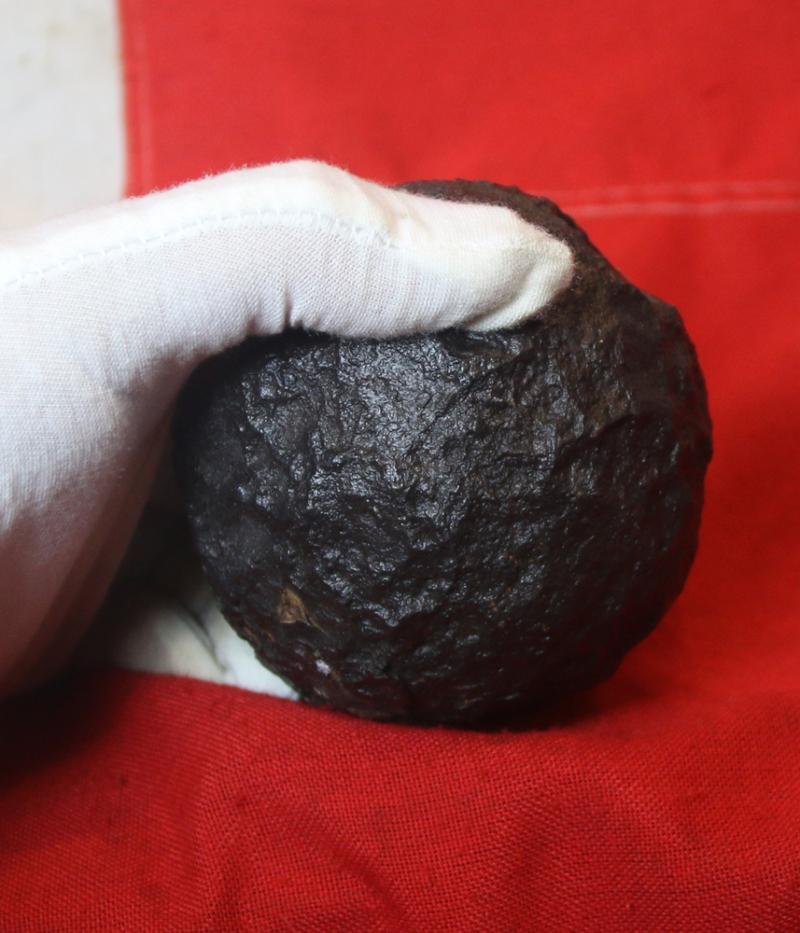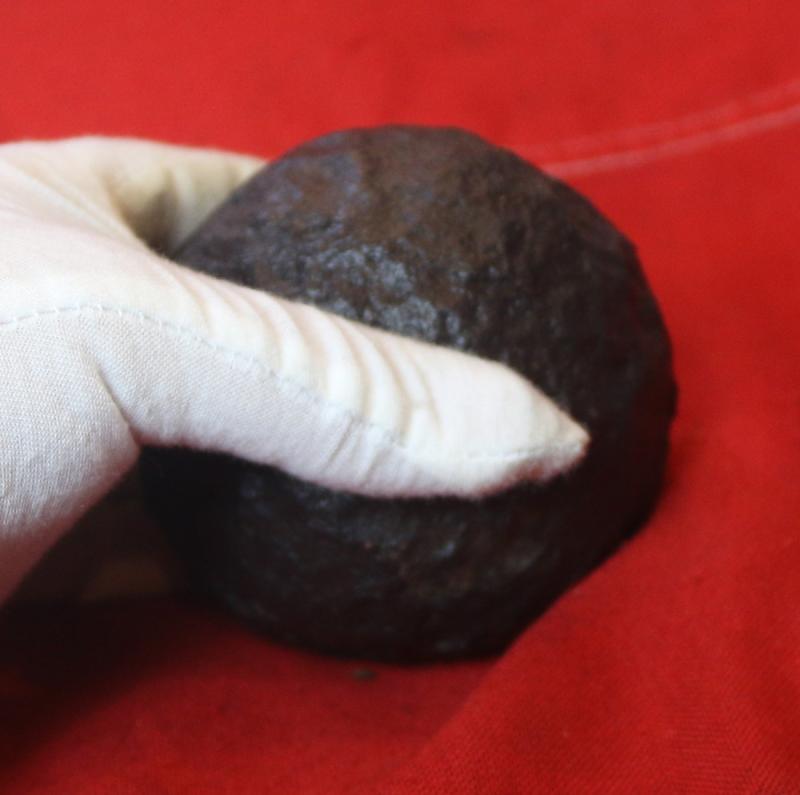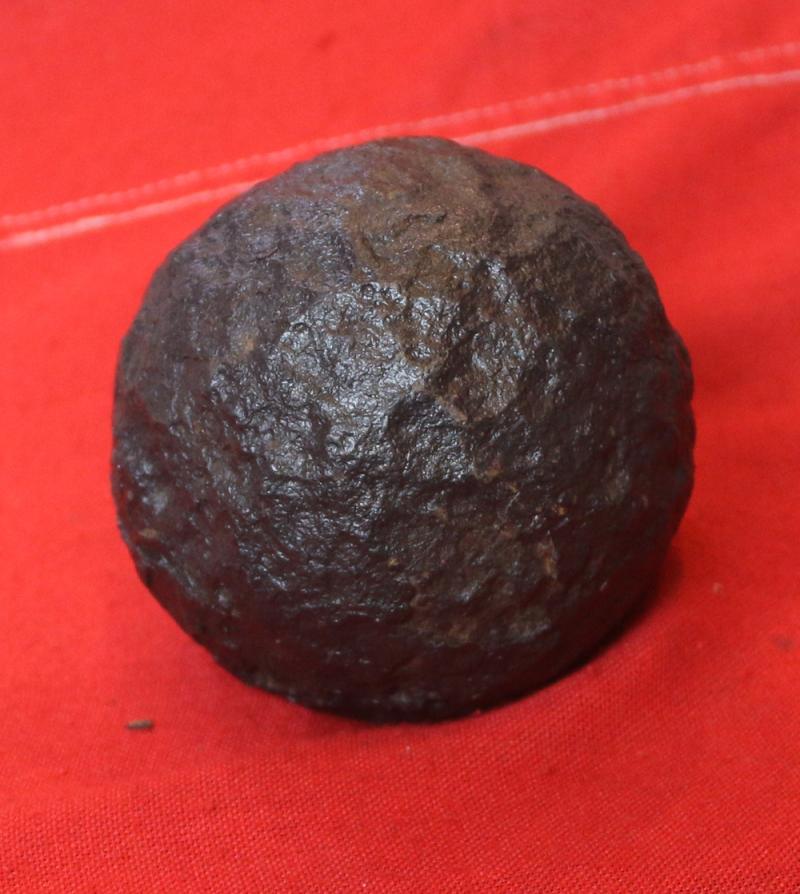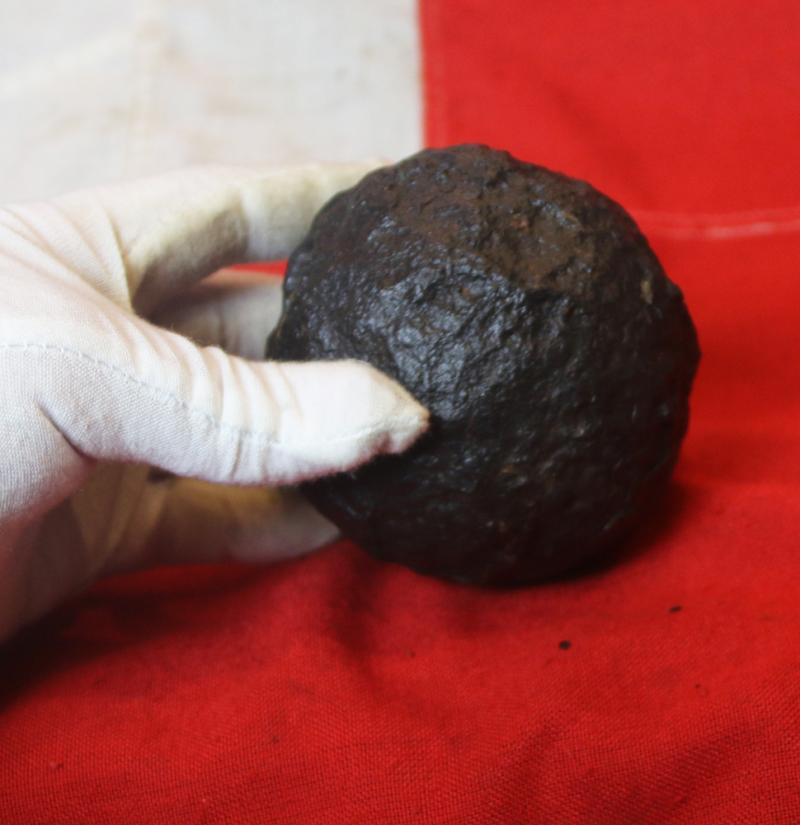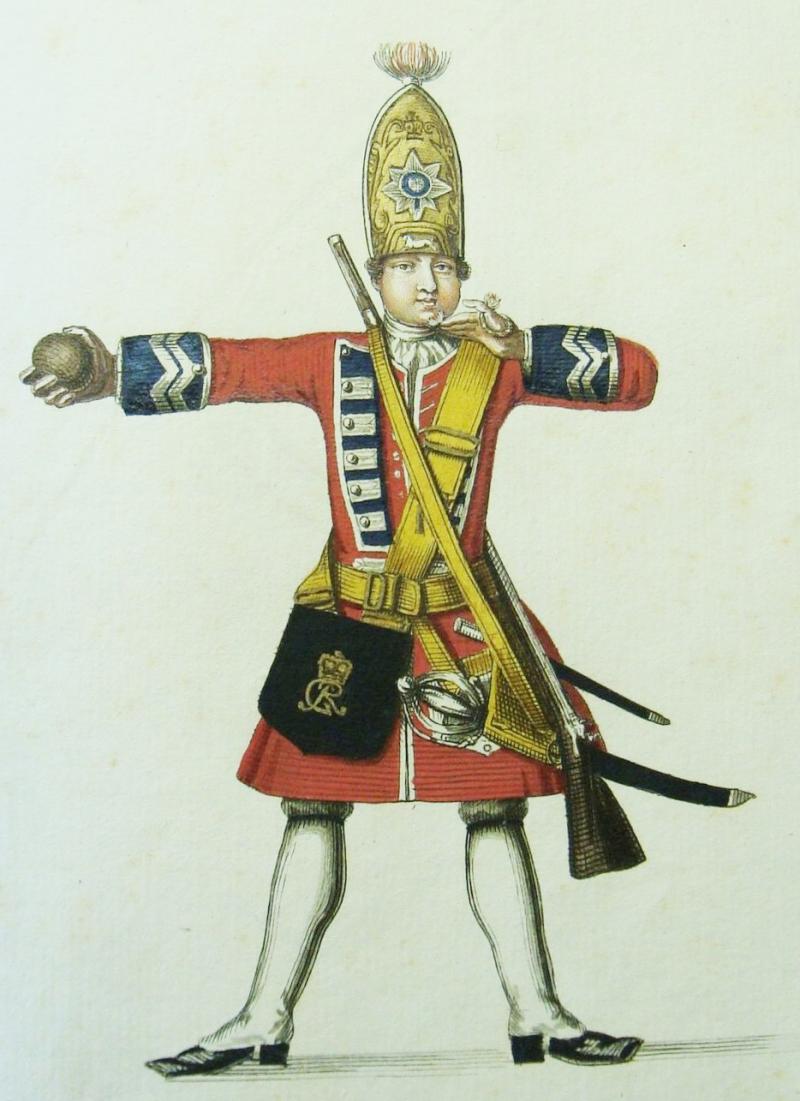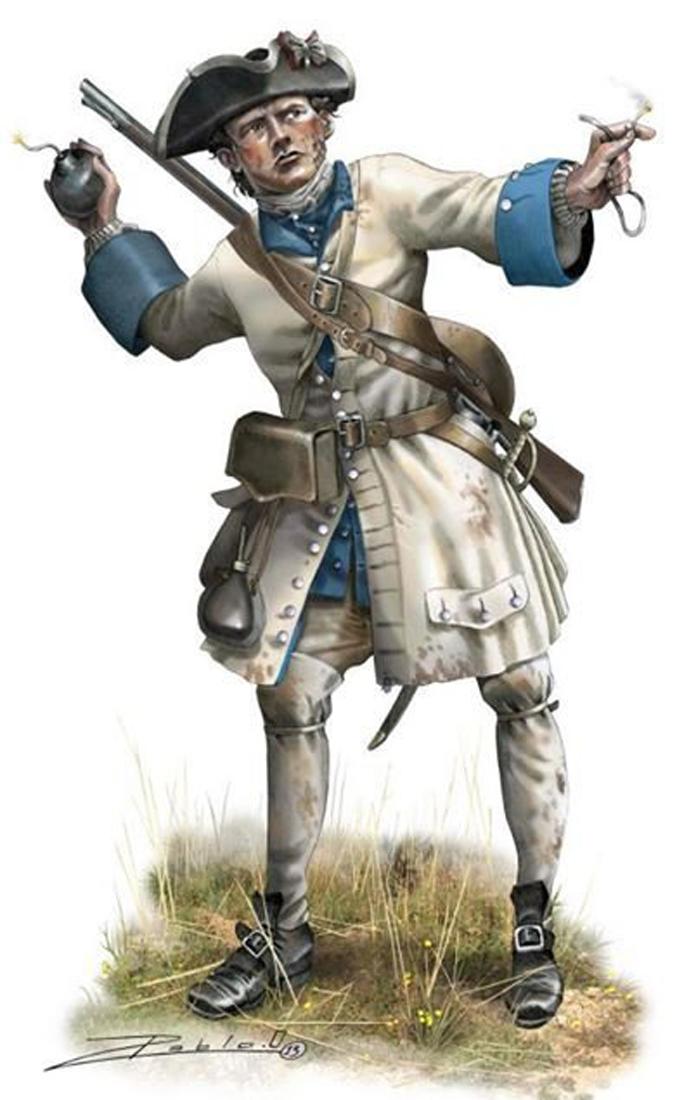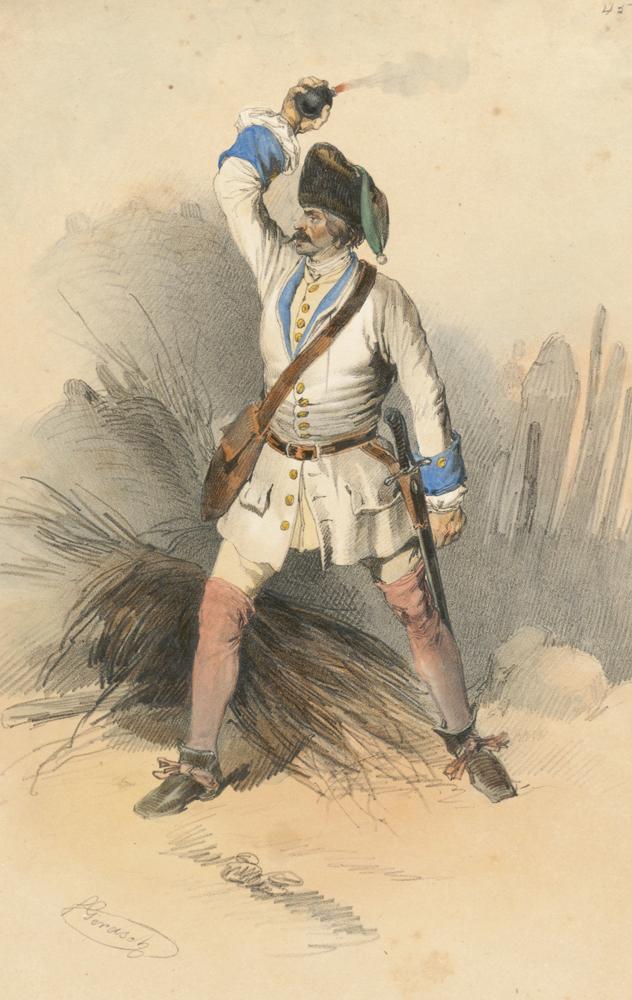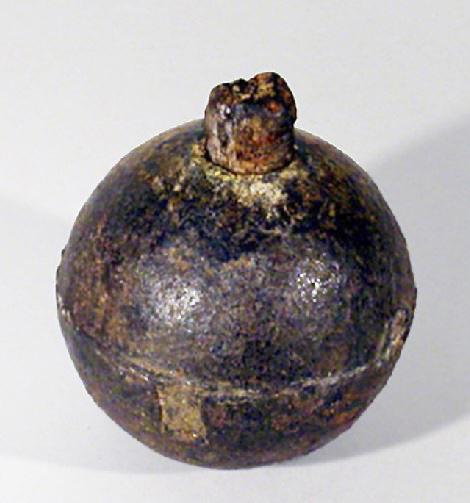A Most Rare Original 17th to 18th Century Iron Royal Naval Exploding Hand Grenade, 3.5 inches
The exploding grenade is hollow cast iron, around 3.5 inches across, and would originally be filled with gunpowder, sealed with a wooden plug and fuse and thrown in combat by a grenadier or seaman at sea. The grenade would of course be lit before throwing,
Grenades of this type played an important part in the biggest naval battle of the Revolutionary War. The Bon Homme Richard under the command of Captain John Paul Jones entered into a battle with the British ship the Serapis. The Serapis was a much faster and heavier ship. As the battle continued, the two ships ended up side by side. Jones relied on the eighteen-pound large cannons in the gun room. As six of the cannons were discharged, two of the fired guns burst. This explosion blew out the deck above and killed a large number of the people below. Jones was forced to abandon his most powerful weapons. As the firing halted, British Captain Pearson asked Jones if he was surrendering. Jones’s comment has endured the test of time. He replied, “I have not yet begun to fight.” The fighting continued but with the battle guns disabled there was little the Bon Homme Richard could do. As the crew of the Serapis fought below, the seamen of the Bon Homme Richard began throwing grenades onto the upper two decks of the Serapis. Others followed suit, throwing the grenades through the ports of the Serapis. One seaman climbed to the very end of a yardarm and with a bucket of grenades achieved such precision that he was able to land grenades through the main hatchway. The powder-boys of the Serapis carelessly laid out a row of cartridges on the main deck. One of the grenades hit loose powder, setting off a domino effect igniting one cartridge after another. The explosion was devastating to the Serapis. It is estimated that 60 men were instantly disabled by the single, well-placed grenade. The Serapis was permanently disabled and the Bon Homme Richard under John Paul Jones was victorious.
The term 'grenade' comes from Spanish. It means 'pomegranate', and in the late 16th and early 17th centuries the Habsburg infantry made their name by throwing pomegranate-sized metal balls packed with gunpowder and shrapnel and with a lit fuse poking out the top. Such weapons became well known during the Thirty Years' War.
The French adopted the idea, and in 1667 the Régiment du Roi of King Louis XIV was assigned a permanent company of specialised grenadiers. By 1670, 29 regiments of the French army had similar companies. In those days France was the trendsetter in military affairs, and so before long every respectable army in Europe was recruiting grenadiers.
In 1678 the English diarist john Evelyn described seeing: "A new sort of soldiers with a pouch full of hand grenades. They wore furred caps with coped crowns like Janizaries, which gave them a fierce expression".
These grenadiers were assault troops used in sieges and close-quarters combat. As well as grenades they were armed with swords or even axes, and their most important job was storming breaches in enemy walls. This was dangerous work, so grenadiers were encouraged by being given higher pay, fancy uniforms and special privileges, and were treated as elite troops.
In addition, grenadiers were deliberately chosen from the largest, strongest men available. They had to be strong in order to throw their grenades to a safe distance! The fact that the grenadiers were thus the biggest and toughest men in the regiment didn't hurt their elite status one bit, either.
In the 17th century, which was still the age of the pike, grenades even found their uses on the open battlefield. The introduction of the musket-and-bayonet combination after 1700, and the replacement of matchlock muskets by the more reliable and faster-firing flintlock, greatly increased the firepower of infantry units. Now every soldier had a firearm, not just a proportion of them. Grenadiers could no longer hope to get close enough to a body of infantry to throw their grenades without suffering heavy losses from the enemy musket fire.
As a result, the grenade fell out of use — the French army withdrew it from service in 1715, for example — apart from occasional specialised service as a weapon of siege warfare.
Grenadiers no longer used grenades, but the practice continued of designating one company in each battalion or regiment as the 'grenadier company'. The tallest and strongest soldiers were still assigned to it, and they were given a distinctive uniform and higher status. In return, they were often assigned the most dangerous missions, especially those involving close combat such as assaulting the enemy positions or leading a charge.
It was common practice to gather together the grenadier companies of several regiments on the battlefield to form a single ad hoc unit of assault troops for special missions. Eventually, this led to the formation of permanent specialist grenadier regiments: both the Prussians and Austrians did this during the Seven Years War.
Eventually — by the 19th century — the designation 'grenadier' lost all meaning except as a title of certain units. In the British Army, the First Regiment of Guards was renamed the Grenadier Guards in 1815 purely as a badge of honour for their service against Napoleon, not an indication of their tactical role. Even the old distinction of grenadier, light and line companies in a battalion was abolished in 1858, though the change was phased in regiment-by-regiment over the next decade.
1.9lb weight
We show in the gallery the last photograph in the gallery an identical sized example grenade found in the Florida Straight shipwreck now the Smithsonian
From a 1733 shipwreck, a recovered hand grenade
from the Florida Strait
Iron sphere, hollow
overall: 4 1/2 inches including wooden plug, x 3 1/2 in x 3 1/2 in; 11.43 cm x 8.89 cm x 8.89 cm
Safe inert and empty. It has spent over two days in the workshop being cleaned and conserved. Weight 1.6 lbs
Code: 24873



